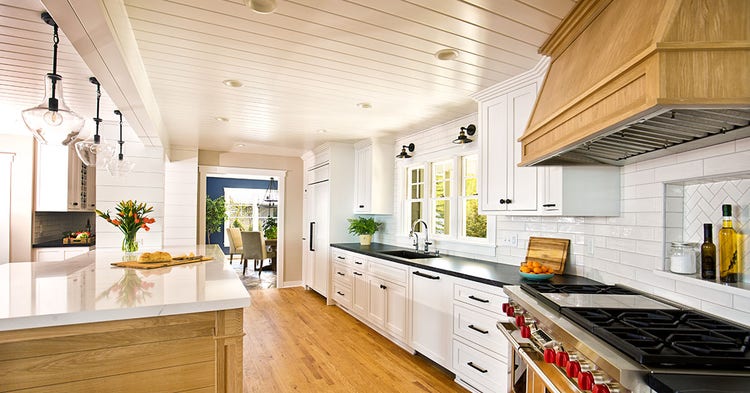When planning a home remodel, choosing sustainable materials can make a significant difference—not only for the environment but also for your long-term health and comfort. Sustainable design focuses on minimizing waste, conserving energy, and using eco-friendly resources that last. Much like a carefully chosen hidden face dp, where subtle details reflect personality and meaning, the materials you select for your home quietly express values of responsibility and care. Here are some sustainable options worth considering in your next remodel.
Bamboo: A Rapidly Renewable Resource
Bamboo is one of the most popular eco-friendly materials due to its rapid growth and durability. Unlike hardwoods that take decades to mature, bamboo regenerates in just a few years, making it a renewable alternative for flooring, cabinetry, and even countertops. Its sleek, modern aesthetic pairs beautifully with a wide range of interior designs, while its strength rivals that of traditional wood.
Recycled Wood And Reclaimed Lumber
Using recycled wood or reclaimed lumber reduces the demand for fresh timber and keeps older materials out of landfills. These pieces often carry unique textures and character that new wood cannot replicate. For homeowners interested in exploring more creative options, platforms like housivo.com.au provide inspiration and access to sustainable building ideas. Reclaimed materials not only promote eco-consciousness but also add warmth and individuality to a remodeled space.
Recycled Metal For Fixtures And Accents
Metals such as aluminum, copper, and steel are highly recyclable without losing quality. Incorporating recycled metals into your remodel—whether for roofing, backsplashes, or decorative accents—reduces the need for new mining, which is energy-intensive and damaging to ecosystems. Plus, recycled metal pieces bring durability and a modern, industrial charm to kitchens, bathrooms, and outdoor spaces.
Recycled Glass Surfaces
Recycled glass is another versatile and sustainable option. It can be repurposed into countertops, tiles, or decorative panels, offering both style and eco-friendly benefits. These surfaces often have a striking, colorful appearance that makes them stand out in kitchens or bathrooms. Choosing recycled glass also helps reduce the amount of waste glass sent to landfills, turning discarded material into something beautiful and functional.
Cork: Comfortable And Renewable
Cork, harvested from the bark of cork oak trees, is a renewable and biodegradable material. It is commonly used for flooring, wall coverings, and insulation. Cork is naturally resistant to mold, mildew, and pests, making it a practical choice for healthier indoor air quality. Much like lines of sad shayari in hindi that capture deep meaning with simplicity, cork brings understated elegance and comfort to interiors while quietly supporting sustainability.
Natural Stone: Timeless And Durable
While quarrying stone can have environmental impacts, choosing locally sourced or recycled stone reduces its footprint. Stone surfaces, such as granite or slate, are incredibly durable and often last for decades, reducing the need for replacements. Their timeless appeal ensures your remodel remains stylish and relevant for years, making natural stone a sustainable long-term choice.
Insulation From Recycled Materials
Energy efficiency is a cornerstone of sustainable living, and good insulation plays a key role. Insulation made from recycled denim, cellulose, or wool is not only effective but also eco-friendly. These materials reduce energy use by keeping homes warm in winter and cool in summer. Installing sustainable insulation creates comfort while cutting down on long-term utility costs.

Sourcing materials locally reduces transportation emissions while supporting local economies. Upcycled furniture, lighting fixtures, or construction materials can give your remodel a unique and creative flair. Platforms featuring are great resources for finding secondhand or upcycled items that fit your remodel plans. By reusing and repurposing, you create a home that tells a story while minimizing waste.
Eco-Friendly Paints And Finishes
Conventional paints and finishes often contain volatile organic compounds (VOCs) that harm indoor air quality. Eco-friendly paints, stains, and sealants use natural or low-VOC formulas, reducing harmful emissions while still providing vibrant colors and finishes. These alternatives are healthier for families, especially children and pets, while also being kinder to the environment.
Sustainable Dining Spaces
Your remodel might also include updating your kitchen or dining area. Choosing reclaimed wood tables, bamboo cabinets, or recycled glass countertops can turn this central part of your home into a model of sustainability. For additional inspiration, resources like https://www.dinepedia.com.au provide ideas for creating functional, stylish, and eco-friendly dining spaces that bring family and friends together. Sustainable dining design emphasizes both aesthetics and responsible choices, ensuring your remodel reflects your values.
Final Thoughts
Incorporating sustainable materials into your remodel is more than a design choice—it’s a commitment to healthier living and environmental responsibility. Options like bamboo, recycled glass, reclaimed wood, cork, and eco-friendly finishes prove that style and sustainability can coexist beautifully.
Every decision, from flooring to finishes, contributes to a more sustainable future. By choosing wisely, you not only create a space that reflects your values but also inspire others to make eco-conscious choices. Your remodel can serve as a daily reminder that even in design, small changes can make a big impact on both your lifestyle and the planet.




